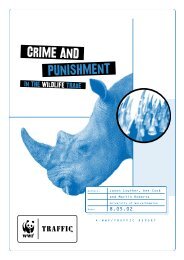In full swing: assessment of trade in orang-utans and ... - WWF UK
In full swing: assessment of trade in orang-utans and ... - WWF UK
In full swing: assessment of trade in orang-utans and ... - WWF UK
You also want an ePaper? Increase the reach of your titles
YUMPU automatically turns print PDFs into web optimized ePapers that Google loves.
Medic<strong>in</strong>al uses <strong>and</strong> primate meat<br />
Credit: ChrisR. Shepherd/TRAFFIC Southeast Asia<br />
Many species <strong>of</strong> wildlife are used as traditional medic<strong>in</strong>es <strong>in</strong> <strong>In</strong>donesia <strong>and</strong> primates are no exception. <strong>In</strong> <strong>In</strong>doch<strong>in</strong>a,<br />
gibbons are sometimes hunted for medic<strong>in</strong>al purposes (Eames & Robson, 1993) <strong>and</strong> there have been claims that some<br />
will eat the meat <strong>of</strong> <strong>orang</strong>-<strong>utans</strong> as an aphrodisiac (Rijksen & Meijaard, 2000). On Java, however, primates are rarely<br />
used for such purposes. At bird markets, some vendors are<br />
specialized at sell<strong>in</strong>g live animals to be used as traditional<br />
medic<strong>in</strong>e, <strong>and</strong> some <strong>of</strong> these do sell long-tailed macaques<br />
<strong>and</strong> less frequently, pig-tailed macaques for these purposes.<br />
The general op<strong>in</strong>ion, however, amongst those that<br />
regularly monitor bird markets, as well as most <strong>trade</strong>rs at<br />
markets, is that gibbons <strong>and</strong> <strong>orang</strong>-<strong>utans</strong> are not used <strong>in</strong><br />
this manner.<br />
One <strong>trade</strong>r at the Kupang bird market <strong>in</strong> Surabaya who<br />
sold Planta<strong>in</strong> Squirrels Calloscuirus notatus, Large Fruit<br />
Bats Pteropus vampyrus, Common Palm Civets<br />
Paradoxurus hermaphroditus <strong>and</strong> Long-tailed Macaques<br />
to be used as medic<strong>in</strong>e, recalled that <strong>in</strong> the past, he had<br />
Fruit bats Pteropus vampyrus<br />
sold gibbons <strong>and</strong> Siamangs for this purpose as well. To be<br />
used as medic<strong>in</strong>e, the sk<strong>in</strong>ned animal had to be cooked until<br />
the carcass was reduced <strong>in</strong>to a paste or balm, which then<br />
could be applied to cure sk<strong>in</strong> ailments. Gibbons <strong>and</strong> Siamangs were, however, much more expensive than Long-tailed<br />
Macaques or other smaller mammals on <strong>of</strong>fer, <strong>and</strong> the market for these species was very small. <strong>In</strong> the past five years,<br />
the <strong>trade</strong>r reported, he had not bought or sold any gibbon or Siamang for this, or any other purpose. Accord<strong>in</strong>g to this<br />
same <strong>trade</strong>r, ethnic Ch<strong>in</strong>ese prefer the smaller mammals (i.e., the squirrels, fruit bats <strong>and</strong> civets) to be used <strong>in</strong> traditional<br />
medic<strong>in</strong>e <strong>and</strong> they would rarely buy primates, whereas primates were alleged to be mostly bought by the Javanese.<br />
Smits (2002) reported that abon (dried meat) made from <strong>orang</strong>-<strong>utans</strong> was exported from Aceh <strong>and</strong> Central Kalimantan<br />
to Ch<strong>in</strong>a, but no <strong>in</strong>formation was received that this <strong>trade</strong> also reached Java or Bali. Some considered the meat <strong>of</strong> <strong>orang</strong><strong>utans</strong><br />
an aphrodisiac or an ‘obat kuat’ (potency-heightener) (Smits, 2002). Primates, <strong>and</strong> <strong>in</strong> particular, macaques, are<br />
sold as food primarily on Sumatra <strong>and</strong> Sulawesi , where specialized restaurants are operat<strong>in</strong>g that have these primates<br />
on the menu (Anon 1998b). There are few, if any, <strong>in</strong>dications that this <strong>trade</strong> extends to Java, <strong>and</strong> if so, would only rarely<br />
<strong>in</strong>volve primates such as gibbons or <strong>orang</strong>-<strong>utans</strong>.<br />
Wildlife rescue centres<br />
Numbers <strong>and</strong> species composition<br />
Comb<strong>in</strong>ed, the five wildlife rescue centres, the Javan Gibbon Rehabilitation <strong>and</strong> Re<strong>in</strong>troduction Centre, <strong>and</strong> Yayasan<br />
Gibbon <strong>In</strong>donesia have taken care <strong>of</strong> some 87 gibbons (<strong>in</strong>clud<strong>in</strong>g 42 Siamangs) <strong>and</strong> 30 <strong>orang</strong>-<strong>utans</strong>, a small proportion<br />
<strong>of</strong> which have died (three known cases) <strong>and</strong> a larger proportion <strong>of</strong> which have been transferred to rehabilitation centres<br />
<strong>in</strong> Sumatra (Agile Gibbon, Siamang <strong>and</strong> Sumatran Orang-utan) <strong>and</strong> Kalimantan (Bornean White-bearded Gibbon,<br />
Müller’s Gibbon <strong>and</strong> Bornean Orang-utan) (see Table 5).<br />
IN FULL SWING:ASSESSMENT OF TRADE IN ORANGUTANS AND GIBBONS ON JAVA AND BALI,INDONESIA 26


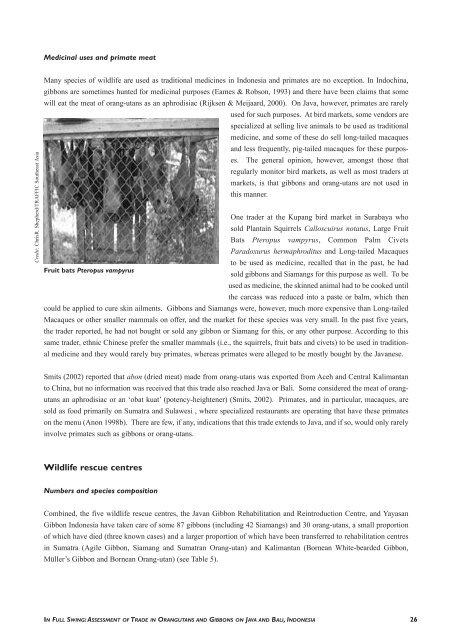
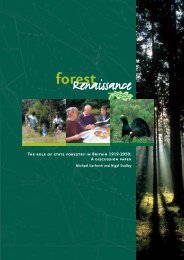
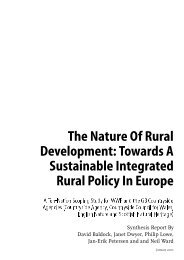
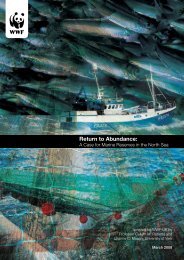

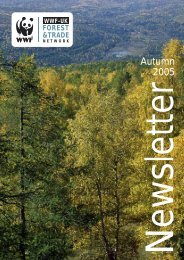

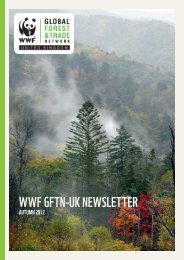
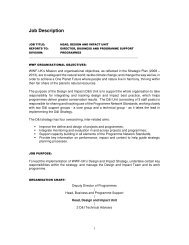
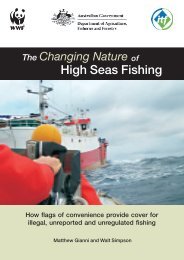
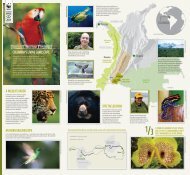
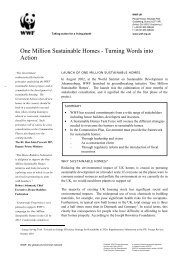
![[PDF] Causes for concern: chemicals and wildlife - WWF UK](https://img.yumpu.com/31929970/1/184x260/pdf-causes-for-concern-chemicals-and-wildlife-wwf-uk.jpg?quality=85)
